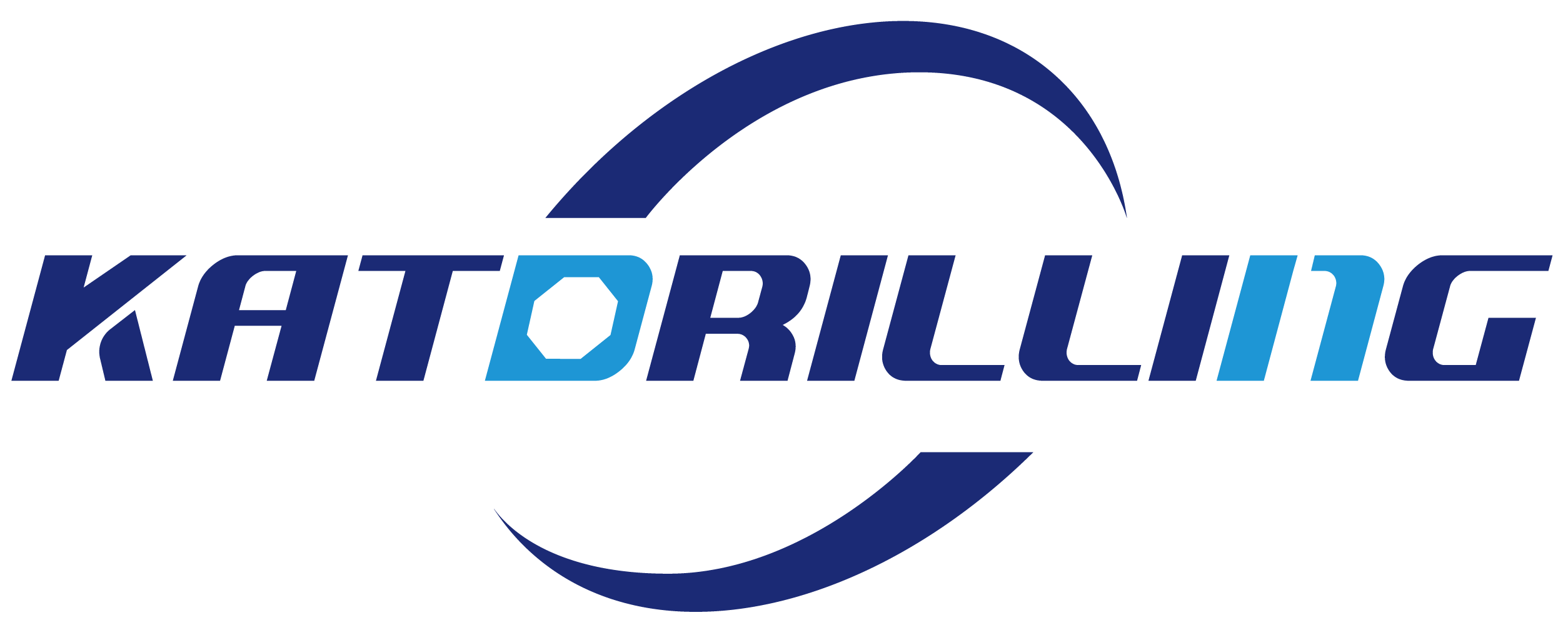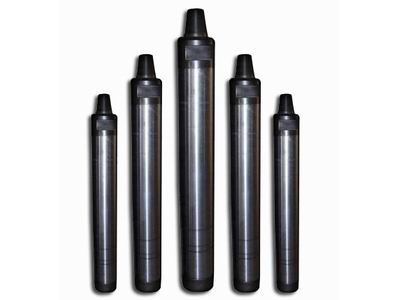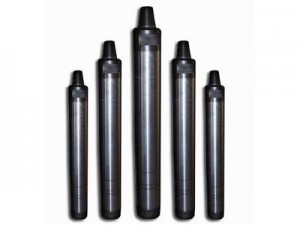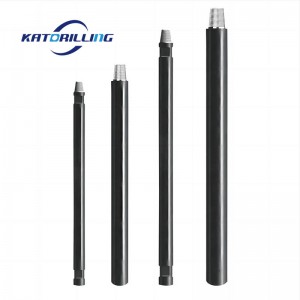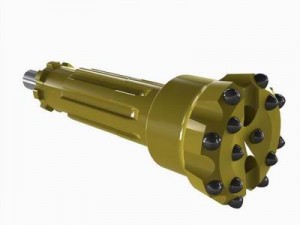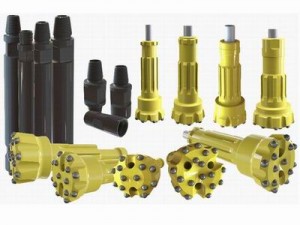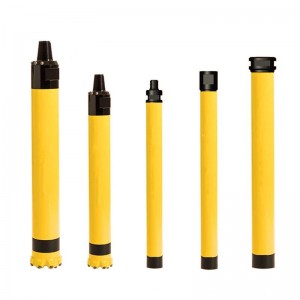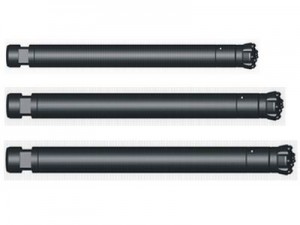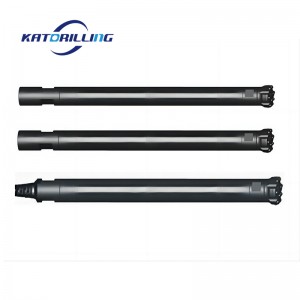R.C DTH Hammer
I .Introduction ofR.C. Drilling
R.C. drilling, referred to as “Centre Sample Recovery”or “Dual Wall Drilling”, employs a Dual Wall Pipe where the drilling medium, normally high pressure air, is passed between the outer and inner tubes down to the face o# the drilling bit where it is returned up the centre tube along with the sample cut by the drill bit.
Ⅱ . The use and the advantages of the R.C. DTH Hammer:
1)No Contamination
The R.C. System collects sample through the recovery holes in the face of the drill bit immediately as the cuttings or sample is formed. The drilled sample does not have to travel the length of the hammer where contamination and loss ofsample takes place.
2) Higher Production
In broken and fractured ground conditions, the R.C. will often out perform the conventional hammer in terms ofpenetratiion rates.
3) Dry Sample
Even in certain water bearing stratas it is still possible to collect a dry sample because the cuttings (sample) are collected as they are formed through the face of the drill bit.
4) Higher Sample Recovery
Because the sample is collected through the face of the drill bit there is no loss of sample when drilling through broken or fractured ground. And since the bit matched to the chuck size, there is very little bypass of sample and recovery rates o, up to 98% are generally achievable.
